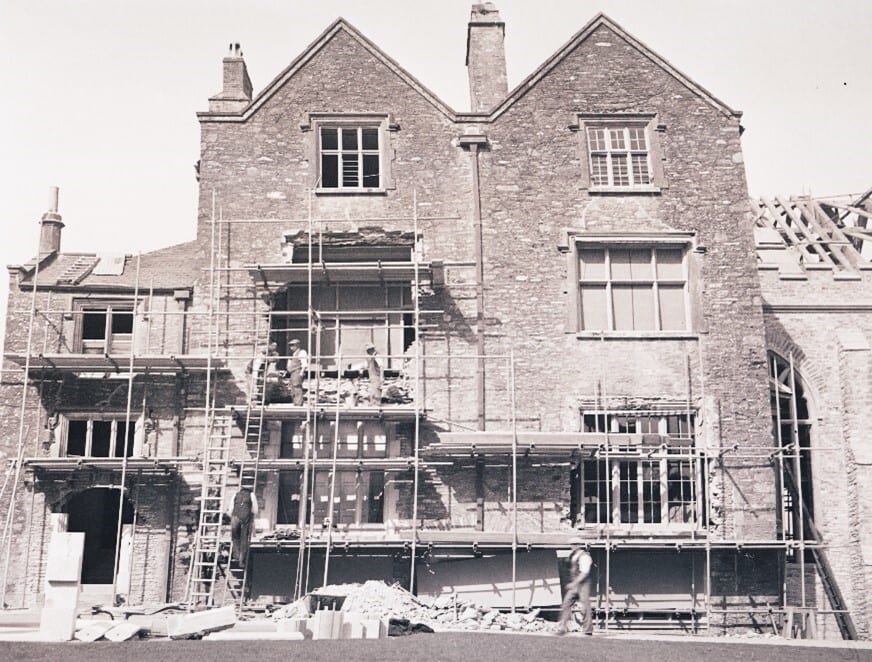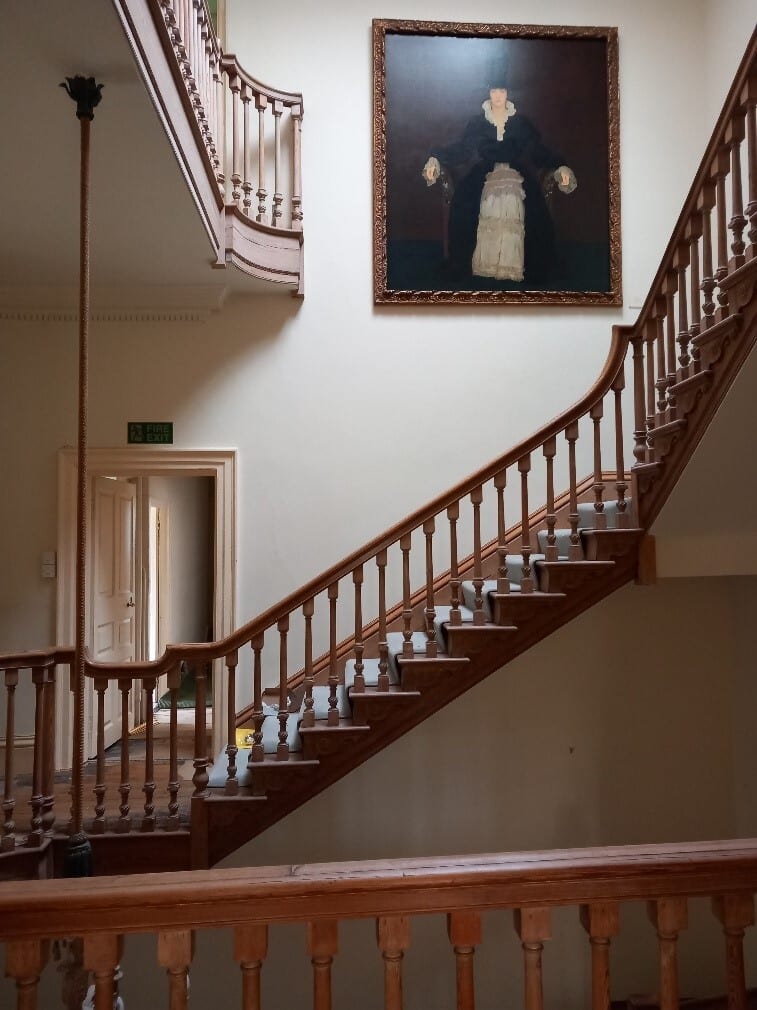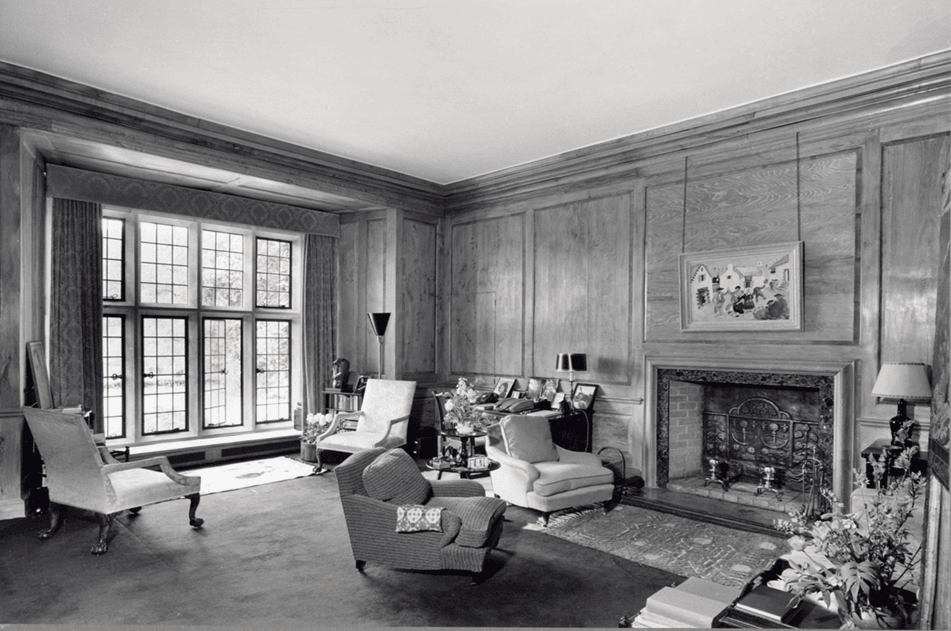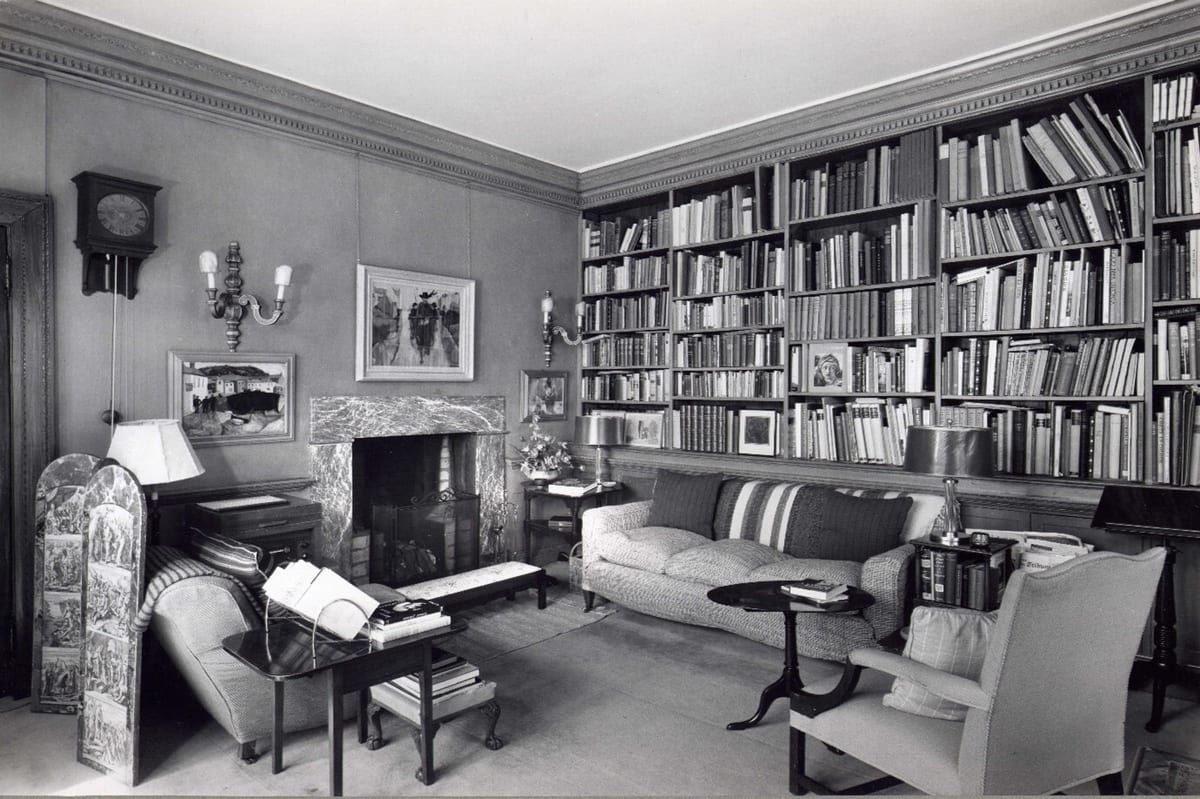Elmhirst Heritage Centre development: Behind the Scenes
To mark Dartington’s centenary year, the Dartington Hall Trust has ambitious plans to open a new Heritage Centre to display its core collection and a revolving programme of temporary exhibitions. Members and visitors will have the opportunity to experience the restored historic private quarters of Leonard and Dorothy Elmhirst as the rooms appeared in their 1960s heyday, with curated tours running from August 2025 onwards. A series of activities and events will also run throughout the first year of the programme, from talks and lectures to performances and art classes. This exciting moment for the organisation reflects the original spirit of the Trust, as a centre for arts, heritage, and creative engagement.

History
When Leonard Elmhirst first visited Dartington in March 1925, the property was still in the ownership of the Champernownes, who had owned the Hall since 1559. The cost of running the estate had left Dartington in a difficult state: the family had moved out in 1921 and left the building empty, the Great Hall was without its roof, the kitchen block had fallen down, and rats could be heard scampering around the abandoned private quarters at night. In the January 23rd 1969 issue of Country Life, Christopher Hussey described the ‘picturesque desolation’ of the scene, noting ‘the Great Hall and its kitchen were roofless, turf a century old covered their floors, and the whole place seemed as if about to be let go.’ Leonard, however, declared Dartington a ‘veritable fairyland,’ and saw an opportunity to restore the Hall and set up the building as a home for his new family and his and Dorothy’s social, economic and cultural experiment in rural reconstruction.
To complete the work, a Dartington-based Engineering and Building department was established, later becoming Staverton Contractors Ltd. Mains water and electrics were installed, and sewage works were built to replace earth closets. Whilst they waited for their new home to be ready, the Elmhirsts stayed in the Seymour Hotel, and later a Victorian house called ‘Elmsleigh’ in Totnes, finally moving in after the first stage of works were completed in September 1926. This would be their family home until Dorothy’s death in 1968.
The art collection

As an avid collector and patron of art, Dorothy Elmhirst used the staircases and walls of this rejuvenated private residence as spaces to display her collection. Anna Neima notes that Dorothy ‘bought through London galleries and, resisting encouragement to open up a public gallery, mostly displayed her acquisitions in the family’s private quarters.’ In 1935, H.S ‘Jim’ Ede, a curator at the Tate, attempted to persuade Dorothy to start a gallery, but the works generally remained in situ, though some pieces would periodically be loaned to other galleries and museums for exhibitions. The Dartington Hall Trust archive contains several loan agreements, including with the City Art Gallery, Manchester, and the American British Art Center, New York. Following Dorothy’s death in 1968, her former personal secretary, Mary Bride Nicholson, took on the role of caring for the works on display and managing their many visitors.
Today, Dartington still holds a rich collection of Modern British and American art, including works by Winifred Nicholson, Christopher Wood, and Bernard Leach. A highlight of the Centre will also be an intriguing portrait of Dorothy, painted as a young woman in ancestral Pilgrim dress by Walter Dean Goldbeck c.1913. The piece will be re-displayed in the entrance hall, illustrating the powerful personalities of the Elmhirsts and re-connecting them visually with the artwork they collected and championed. By returning the works to their original and intended home, the new Elmhirst Centre will reflect the spirit of the Elmhirsts’ approach to collecting and curating. However, there will be one crucial difference: whilst individuals in the 20th century were allowed to view these artworks by invitation, in 2025 we will be opening up this collection to all as a ticketed experience.
The restoration


As part of an ongoing series of works to restore the building, the rooms are being completely rewired, paint samples have been assessed, and new heritage carpets commissioned. Consultants, interior design and Modern British art specialists from the Jenna Burlingham Gallery, Kingsclere, are providing key advice on historic interiors and painting conservation, ensuring the Centre will remain in sympathy with its rich history. The rooms on the first floor are being repurposed as temporary exhibition spaces, whilst the morning room, Leonard’s study, and the reception area are being restored to their appearance in the 1960s.The core collection will be hosted in these rooms, and heritage tours will illuminate the artworks and the history of the building.
To realise plans for this new centre of arts and heritage, Dartington welcomes all offers for support, and you can donate to us here.
Please check our what’s on page for updates on centenary events to celebrate 100 years of Dartington and the new Elmhirst Heritage Centre.
If you are interested in being a Steward or Tour Guide for the Elmhirst Heritage Centre, please contact archiveinfo@dartington.org for more information.
Sources:
Christopher Hussey, ‘Dartington Revisited,’ Country Life, 23 January 1969
Leonard Elmhirst to Dorothy Straight, 6 March 1925
Michael Young, The Elmhirsts of Dartington: The Creation of a Utopian Community, 1982, p.114.
Anna Neima, Practical Utopia: The Many Lives of Dartington Hall, 146
H. S. Ede to Dorothy, 11 October 1935, DWE/A/1
Correspondence between City Art Gallery, Manchester (Baxandall) and Dorothy Elmhirst, 6 Feb 1948-1 Feb 1949, DHTA/DWE/A/1/B/27; Letter from The American British Art Center (Centre), New York and Catalogue, Jan 1941-Feb 1941, DHTA/DWE/A/1/B/22
Mary Bride Nicholson, A Life at Dartington, 2015, p.74.
